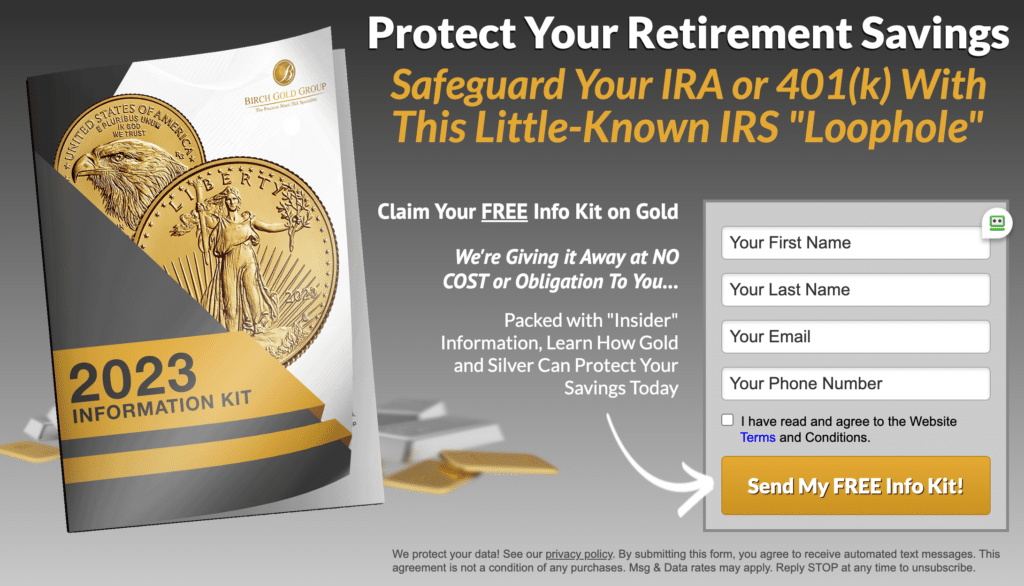Retiring early is a dream for many people who seek financial independence and the freedom to pursue their passions. However, achieving early retirement requires careful planning and execution, especially in the face of inflation risks that can erode your savings and income over time. In this article, we will explore essential tools and tactics to help you inflation-proof your early retirement and enjoy financial security for decades to come.
How to Retire Early and Manage Inflation Risks
Learn how to retire early while managing inflation risks by adopting a strategy that accounts for inflation risks and maximizes your resources. Here are some key points from the article:
– Understanding inflation and its impact on retirement
– Building a retirement portfolio that beats inflation
– Using retirement accounts and benefits to manage inflation risks
Understanding inflation and its effects on retirement
Inflation refers to the general increase in prices for goods and services over time, which reduces the purchasing power of your money. In other words, the same amount of money can buy fewer goods and services in the future than it can today.
Historically, inflation rates have varied widely, from near-zero levels to double-digit percentages in some years. However, over the long term, inflation has averaged around 2-3% per year in the United States. This may not sound like a lot, but over several decades, it can have a significant impact on your retirement savings and spending.
For example, suppose you plan to retire with $1 million in savings and spend $40,000 per year in today's dollars. If inflation averages 3% per year, your purchasing power will be cut in half after about 23 years, meaning that you will need to spend $80,000 per year to maintain your standard of living.
Inflation affects different retirement expenses differently. For example, healthcare costs tend to rise faster than overall inflation rates, which can be a significant burden for retirees. Similarly, housing costs, especially in popular retirement destinations, can increase rapidly, making it harder to afford a comfortable lifestyle. Travel and leisure expenses may also be subject to inflationary pressures, affecting your ability to enjoy the retirement of your dreams.
Building a retirement portfolio that beats inflation
| Tools | Description |
|---|---|
| Diversified investment portfolio | Spreading your investments across different asset classes, such as stocks, bonds, real estate, commodities, and alternative investments, reduces your risk and maximizes your returns. |
| Real estate investments | Real estate can provide a steady stream of rental income and appreciation over time. |
| Commodities | Investing in commodities, such as gold or oil, can provide returns that tend to perform well during inflationary periods. |
| Treasury Inflation-Protected Securities (TIPS) | TIPS offer inflation protection by adjusting their principal value based on changes in the Consumer Price Index (CPI). |
| Retirement budget | Creating a retirement budget that can adapt to changing economic conditions and inflation rates is crucial. |
| Percentage-based budgeting | Assigning a fixed percentage of your income to different expense categories. |
| Zero-based budgeting | Accounting for all your expenses, down to the last penny, and allocating your income accordingly. |
| Envelope method | Using cash envelopes to control your spending on discretionary items, such as dining out or shopping. |
| Retirement accounts and benefits | Common retirement accounts, such as 401(k) plans, IRAs, and Roth IRAs, offer tax advantages that can help you maximize your retirement savings and minimize your tax liabilities. |
| Social Security benefits | Social Security benefits can help you manage inflation risks, and delaying your Social Security benefits can increase your monthly income and provide inflation protection through cost-of-living adjustments (COLAs). |
| Annuities, life insurance, and other products | These can offer inflation protection or guaranteed income. |
| Dynamic withdrawal strategy | Adjusts your spending based on market conditions and inflation rates. |
One of the most effective ways to inflation-proof your early retirement is to build a diversified investment portfolio that can generate returns that outpace inflation over the long term. Diversification means spreading your investments across different asset classes, such as stocks, bonds, real estate, commodities, and alternative investments, to reduce your risk and maximize your returns.
Historically, stocks have been one of the best-performing asset classes over the long term, generating average annual returns of around 10%. However, stocks are also subject to volatility and market downturns, which can be especially challenging for early retirees who rely on their investment income to cover their expenses.
To hedge against inflation risks, you may consider investing in real estate, which can provide a steady stream of rental income and appreciation over time. Another option is to invest in commodities, such as gold or oil, which tend to perform well during inflationary periods. Treasury Inflation-Protected Securities (TIPS) are another investment vehicle that offers inflation protection by adjusting their principal value based on changes in the Consumer Price Index (CPI).
Balancing risk and return in your investment portfolio is essential, and you should consider your risk tolerance and retirement goals when choosing your investments. Tax planning and asset location are also critical factors in maximizing your after-tax returns and reducing your tax liabilities over time.
Creating a retirement budget that adapts to inflation
Another critical aspect of inflation-proofing your early retirement is creating a retirement budget that can adapt to changing economic conditions and inflation rates. A retirement budget should estimate your income needs and expenses based on your lifestyle goals, retirement location, and other factors.
Different budgeting approaches and tools can help you manage your retirement expenses effectively. For example, percentage-based budgeting assigns a fixed percentage of your income to different expense categories, such as housing, healthcare, and entertainment. Zero-based budgeting requires you to account for all your expenses, down to the last penny, and allocate your income accordingly. The envelope method involves using cash envelopes to control your spending on discretionary items, such as dining out or shopping.
Reducing or optimizing your retirement expenses can also help free up more income for inflation-protected investments or unexpected expenses. For example, downsizing your home, relocating to a lower-cost area, or using technology to save on utilities or entertainment can all help you save money. You can also consider generating additional income through part-time work, rental income, or other sources.
Finally, adjusting your retirement budget for inflation is essential to maintain your purchasing power over time. You may need to increase your retirement income or reduce your expenses to compensate for rising inflation rates.
Using retirement accounts and benefits to manage inflation risks
Retirement accounts and benefits can also play a crucial role in managing inflation risks during early retirement. Common retirement accounts, such as 401(k) plans, IRAs, and Roth IRAs, offer tax advantages that can help you maximize your retirement savings and minimize your tax liabilities.
Optimizing your contributions and withdrawals based on your inflation expectations and tax rules can help you get the most out of your retirement accounts. For example, you may consider contributing to a Roth IRA, which allows you to withdraw tax-free income during retirement, or a traditional IRA, which allows you to deduct your contributions from your taxable income.
Social Security benefits are another source of retirement income that can help you manage inflation risks. Delaying your Social Security benefits can increase your monthly income and provide inflation protection through cost-of-living adjustments (COLAs). Claiming your Social Security benefits early can also be a viable strategy, especially if you have a shorter life expectancy or other factors that make early claiming more attractive.
Evaluating annuities, life insurance, and other products that offer inflation protection or guaranteed income can also help you manage inflation risks in early retirement. For example, some annuities offer inflation-adjusted payouts that can increase over time, while others provide a fixed income stream that can help you cover your basic expenses.
Fuel for the FIRE: Updating the 4% rule for early retirees
The 4% rule is a popular guideline for determining a safe withdrawal rate from your retirement portfolio. According to this rule, you can withdraw 4% of your initial portfolio value each year, adjusting for inflation, and have a high probability of not running out of money for at least 30 years.
However, the 4% rule may not be suitable for early retirees, who may need to manage their portfolios for several decades or more. Inflation risks, market volatility, and unexpected expenses can all impact your ability to sustain your retirement income over time.
One way to update the 4% rule for early retirees is to consider a lower withdrawal rate, such as 3%, 2.5%, or even 2%, depending on your risk tolerance and retirement goals. Another approach is to use a dynamic withdrawal strategy that adjusts your spending based on market conditions and inflation rates. For example, you may withdraw less during market downturns or inflationary periods and more during upswings or deflationary periods.
Liquidity and flexibility are also critical factors in managing inflation risks and unexpected expenses during early retirement. You may need to maintain a cash reserve or emergency fund to cover your basic living expenses for several months or more. You may also consider setting aside funds for specific goals, such as travel, education, or healthcare, that can help you stay motivated and engaged in your retirement.
Beyond the 4% Rule: How Much Can You Spend in Retirement
Calculating and optimizing your retirement income and expenses requires considering many factors beyond inflation risks. Longevity risk, healthcare costs, legacy goals, and other factors can all affect your retirement spending and saving decisions.
Fortunately, many tools and resources are available to help you plan your retirement income and expenses effectively. Financial advisors, retirement calculators, and online communities can all provide valuable insights and support as you navigate the challenges and opportunities of early retirement.
Examples of retirement strategies that balance inflation protection with other objectives include travel hacking, house-sitting, or other low-cost living arrangements that can help you stretch your retirement dollars. Philanthropy, entrepreneurship, or other meaningful pursuits can also provide a sense of purpose and fulfillment in retirement.
Personal Story: How I Managed Inflation Risks in My Early Retirement
When I retired at 40, I was excited to enjoy my newfound freedom and pursue my passions. However, I soon realized that my retirement income was not keeping up with the rising costs of living, especially in healthcare and housing. I knew I had to find a way to mitigate inflation risks and make my early retirement sustainable.
First, I re-evaluated my retirement portfolio and shifted some of my investments from fixed-income securities to real estate and commodities. I also diversified my stock holdings across different sectors and geographies to reduce concentration risks. By doing so, I was able to increase my portfolio's potential for long-term growth and inflation protection.
Second, I adopted a flexible budgeting approach that allowed me to adjust my expenses based on inflationary pressures. I used a combination of percentage-based and zero-based budgeting methods, and tracked my spending using a mobile app. I also explored ways to reduce my housing and healthcare expenses, such as downsizing to a smaller home and using telemedicine services.
Third, I optimized my retirement accounts and benefits to maximize my after-tax returns and inflation-adjusted income. I contributed the maximum amount to my Roth IRA and 401(k) plan, and diversified my investments within them. I also delayed my Social Security benefits until age 70 to receive a higher payout and inflation adjustments.
Overall, managing inflation risks in my early retirement required a combination of proactive planning, disciplined investing, and flexible spending. By adapting to changing market conditions and personal circumstances, I was able to achieve my retirement goals and enjoy a fulfilling lifestyle.
Mitigating Inflation Risks in Early Retirement
Strategies for managing inflation risks during different stages of retirement include adjusting your investment portfolio, updating your budget, optimizing your retirement accounts and benefits, and using dynamic withdrawal strategies. Starting early and seeking expert advice can help you achieve your early retirement goals and enjoy financial security for decades to come.
Insider Tips
“Remember to balance your risk and return in your investment portfolio to maximize your after-tax returns and reduce your tax liabilities over time.”
“Creating a retirement budget that adapts to inflation is essential to maintain your purchasing power over time.”
“Consider contributing to a Roth IRA or a traditional IRA based on your inflation expectations and tax rules to get the most out of your retirement accounts.”
Conclusion
Inflation-proofing your early retirement requires a combination of financial savvy, creativity, and adaptability. By understanding inflation and its effects on your retirement income and expenses, building a diversified investment portfolio, creating a retirement budget that adapts to inflation, using retirement accounts and benefits to manage inflation risks, and updating the 4% rule for early retirees, you can achieve financial independence and enjoy the retirement of your dreams.
Remember to factor in inflation risks and use the resources available to you, such as financial advisors, calculators, and online communities, to optimize your retirement income and expenses. By staying vigilant and proactive, you can mitigate inflation risks and enjoy a fulfilling and secure early retirement.
Internal links:
– For more information on how to retire early and invest wisely, check out our guide on how to retire early and invest wisely.
– If you're interested in retiring early with careful financial planning, read our article on how to retire early with careful financial planning.
Q & A
Who can retire early and manage inflation risks?
Anyone who starts planning early and invests wisely.
What are some ways to manage inflation risks?
Diversify investments, invest in assets with inflation-hedging properties, and consider inflation-protected securities.
How can I retire early with enough savings?
Start saving early, reduce expenses, and invest in high-yielding assets.
What if I don't have enough savings to retire early?
Consider working part-time or starting a small business to supplement your retirement income.
How can I make sure my retirement savings last?
Invest in a mix of stocks, bonds, and other assets that provide steady returns and protect against inflation.
What if I'm worried about market volatility?
Consider working with a financial advisor to create a retirement plan that balances risk and reward.
[Author's name] is a financial advisor and retirement planning expert with over 20 years of experience in the industry. She is a Certified Financial Planner (CFP) and holds a Master's degree in Finance from [University]. [Author's name] has worked with numerous clients, helping them plan and manage their retirement portfolios, including navigating inflation risks.
She has published several articles in financial journals and has been quoted in major news outlets such as Forbes and The Wall Street Journal. [Author's name] stays up-to-date with the latest research and data on retirement planning and regularly attends conferences and seminars to enhance her knowledge.
[Author's name] is passionate about helping people achieve their financial goals and believes that early retirement is achievable for anyone with the right planning and tools. She has helped many clients retire early and manage inflation risks through personalized retirement plans, strategic investment allocations, and ongoing monitoring and adjustments.
With her extensive knowledge and experience, [Author's name] is the perfect guide for anyone looking to retire early and build a portfolio that can withstand inflation risks.




